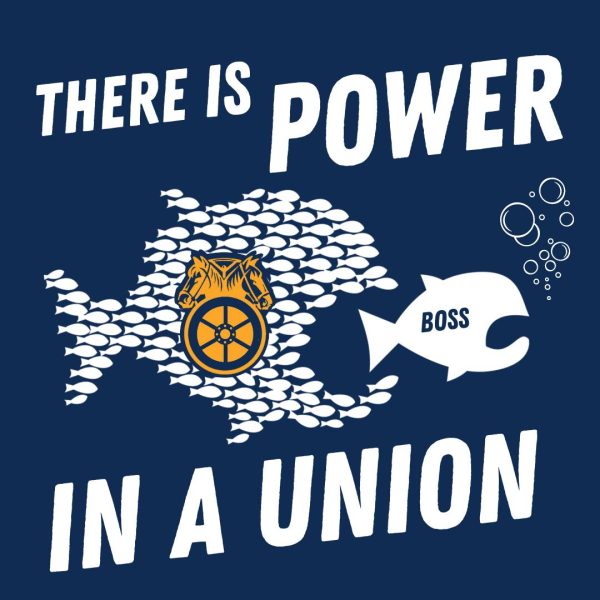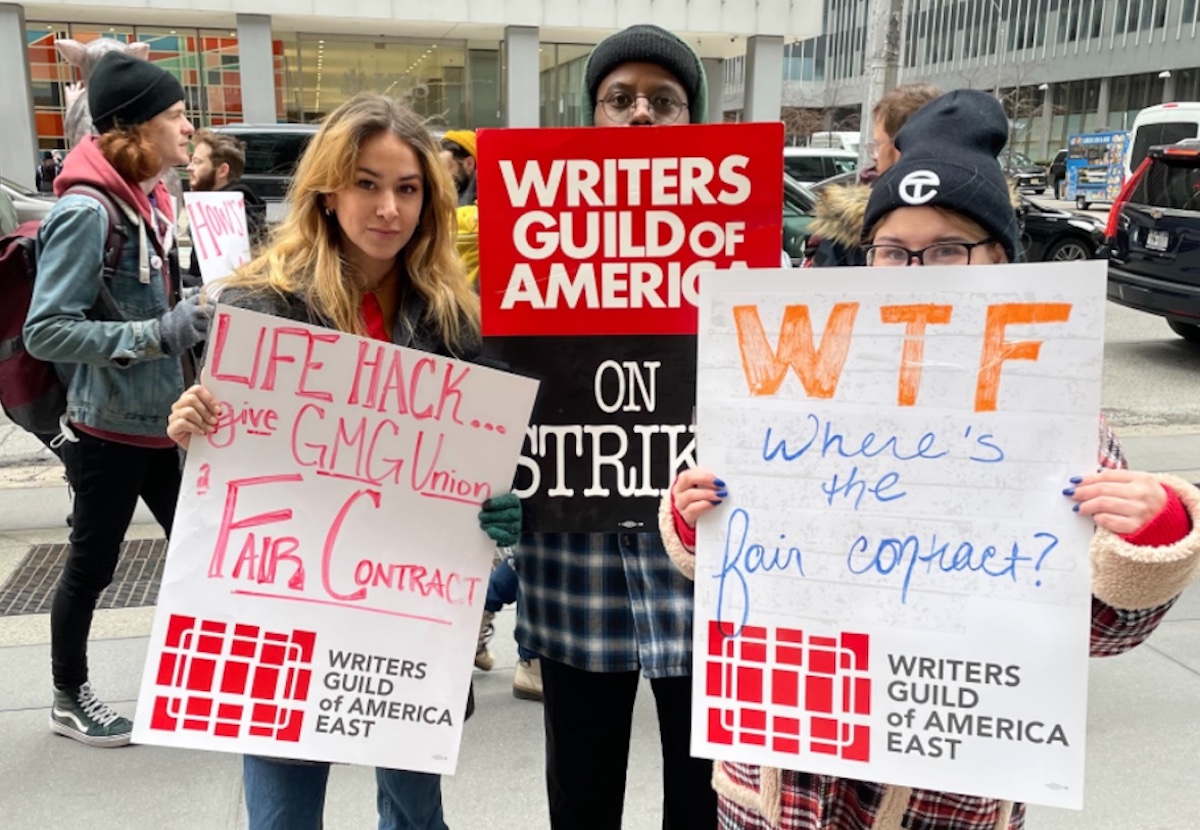
BY John Logan,
The Starbucks Workers United union campaign continues to produce astounding election wins week after week. As of this writing, more than 260 stores have petitioned for National Labor Relations Board (NLRB) elections: The union has won more than 70 NLRB elections, most by overwhelming margins, and has lost only nine elections. The union has won elections throughout the country, including in places where union victories are rare, including in Mesa, Arizona; Boone, North Carolina; Jacksonville, Florida; Knoxville, Tennessee; Augusta, Georgia; and Overland Park, Kansas.
Last Monday, workers in Greenville, South Carolina, voted eight to one to become the first unionized store in the state. Greenville has a deserved reputation as being “among the most relentlessly anti-union cities in the nation,” as The New York Times described it in 1977. Starbucks Workers United’s victory there is arguably one of the most remarkable union wins in recent years.
South Carolina Has Lowest Union Density in the Nation
For the past two years, South Carolina has been the least unionized state in the country, and is the only state with a union density under 2 percent: South Carolina’s union density in 2021 was just 1.7 percent. The next lowest state, North Carolina, was 2.6 percent.
Most recent union campaigns in the state have failed: In a campaign that lasted for several years before a defeat in 2017, the machinists union was met with a blistering anti-union campaign inside and outside of Boeing in North Charleston, South Carolina. Then-Republican Gov. Nikki Haley stated, “We discourage any companies that have unions from wanting to come to South Carolina because we don’t want to taint the water.”
Then-Governor Haley’s labor director, Catherine Templeton, said on her first day in office, “Let me be very clear … this is an anti-union administration.” The South Carolina Chamber of Commerce — which has had links to anti-union organizations like Union Free South Carolina and Palmetto Shield — also discourages unionized firms. When its CEO retired in 2020, he listed “Keeping Unions out of South Carolina” among his major accomplishments.
Greenville Is the Most Anti-Union City in the State
Greenville is even more anti-union than the rest of South Carolina. The metropolitan area has only seven employers with any union workers, three represented by the International Brotherhood of Electrical Workers, two by the Teamsters, one by the Teamsters and the United Food and Commercial Workers, and one by the International Association of Machinists and Aerospace Workers. Moreover, over the past decade, the city’s unionized workers have not participated in a single strike, protest or walkout.
The Greenville area has had an extraordinarily lawless anti-union history. In one especially bloody incident at the Chiquola Mill in Honea Path, South Carolina, just outside Greenville, seven union supporters were shot and killed during the 1934 national textile strike.
In the 1970s, the J.P. Stevens textile mill in Greenville, along with its other mills in the Carolinas, became the country’s worst labor law violator. When it finally recognized the union in 1980, The New York Times reported that the “truce” marked “the end of one of the ugliest episodes in recent labor history: a 17-year war during which Stevens repeatedly harassed or fired union activists.”
Marketing anti-unionism:
The Greenville Area Development Corporation has stressed that weak unions are a major reason firms locate there, boasting that, “In 2021, the private sector unionization rate for the Greenville area was only 0.3%. The Greenville Metropolitan Statistical Area is the least unionized Metropolitan Statistical Area in the United States…. There have been no reported work stoppages reported in the past ten years.” Even with a 0.3 percent private-sector unionization rate, the Greenville Chamber of Commerce lists “Promoting a Union Free Environment” prominently among its major policy and economic goals.
Greenville is also home to several leading law firms that specialize in fighting unions. The nation’s second-largest union avoidance law firm, Ogletree Deakins, was founded in Greenville in 1977 with 11 lawyers — along with five in Atlanta, Georgia. It now has more than 800.
Ogletree has played a key role in keeping Greenville and South Carolina union-less over the past several decades. It represented J.P. Stevens, and it helped several foreign auto transplants fight unionization, causing one recent profile to call it a “witness to history.” Attracted by the city’s anti-union reputation, Starbucks firm Littler Mendelson, alongside Jackson Lewis — the nation’s first- and third-largest union avoidance law firms — have long-established offices in Greenville.
Starbucks’s blistering and unlawful anti-union campaign:
For a corporation which consistently and prominently tries to associate itself with progressive values, Starbucks has engaged in one of the most brutal anti-union campaigns of recent decades. The union’s remarkable success has likely obscured some of the intensity and lawlessness of the anti-union campaign.
Starbucks’s anti-union campaign in Buffalo, New York, last fall was comparable in intensity and lawlessness to anything that Amazon or Walmart have ever done to crush unions. In May, the Buffalo regional NLRB office issued a complaint alleging that Starbucks committed more than 200 violations of federal law, an extraordinary number probably not seen since the United Auto Workers’s campaign at Caterpillar over several years in the 1990s.
Starbucks is alleged to have committed hundreds of other unfair labor practices across the United States. The NLRB currently has opened more than 100 allegations of unlawful anti-union behavior. On May 20, the NLRB imposed a bargaining order on Starbucks at the only Buffalo store at which the union had lost, a rare remedy only used when unlawful actions make a fair election impossible for the foreseeable future.
In addition to unlawful dismissals and other illegal actions in Buffalo, Starbucks management has fired workers in Phoenix, Arizona; Memphis, Tennessee; Kansas City, Missouri; Raleigh, North Carolina, and at multiple other locations.
How Did Starbucks Workers Pull Off Greenville Victory?
Given the city’s anti-union reputation, perhaps the most remarkable thing about the Greenville victory is that pro-union workers won there pretty much the same way they’ve won at almost every other Starbucks store across the country.
Intrepid worker-organizers lead the Starbucks union campaign:
After resisting the company’s anti-union onslaught, Starbucks Workers United won two NLRB elections in Buffalo in December 2021. In the six months following those two historic wins in Buffalo, the union campaign has constructed a replicable model based around the dynamism of its intrepid, self-assured worker-organizers at stores all across the country.
New activists who reach out to the campaign by email, Twitter or through the Facebook page have been trained via Zoom meetings on how to organize their own stores. They then go on to play leading roles in organizing other stores in their own region. In regions such as the Boston, Massachusetts, area, worker-organizers have built up an incredible campaign infrastructure. The organization of the Greenville store — the first store in South Carolina to go union — followed a now-familiar pattern for the union campaign.
Shift supervisors as lead organizers:
The lead organizer at Greenville, Hayden Mullen, first reached out to the union campaign via email and was connected with one of the experienced Buffalo-based organizers. Mullen had no previous involvement with unions; he had worked as a barista at another Starbucks outside Spartanburg, South Carolina, before transferring to the Greenville store to become a shift supervisor.
Shift supervisors have no managerial authority and thus are eligible to vote in NLRB elections. Most baristas trust their shift supervisors — often long-serving employees — more than store or district managers. Shift supervisors have been organizers at several stores, which has assisted the organizing. Some stores have had vocal anti-union shift managers, which can undermine organizing. However, at the first store to unionize in the South — in Knoxville — all the shift managers opposed the union, but it still won because the store had an unusually determined and charismatic lead organizer.
Inspired by Sen. Bernie Sanders:
Mullen had worked at American Eagle, Dunkin’ Donuts, Krispy Kreme, and other low-wage service jobs. He was inspired and politicized by Sen. Bernie Sanders’s presidential campaigns — as have other Starbucks activists — and strongly supported workplace organizing.
Before the Greenville union campaign became public last fall, Mullen informed his store manager at his former store in Spartanburg — who was sympathetic — that Starbucks would benefit from a union. Mullen’s Greenville store manager, in contrast, was curious about how unionization would change her job — which Mullen explained to her satisfaction. The Greenville store manager, however, later participated actively in the anti-union campaign, which Mullen attributes to pressure from Starbucks corporate representatives.
Starbucks has consistently worried that store managers are insufficiently dedicated to the anti-union campaign, and both CEO Howard Schultz and Executive Vice President Rossann Williams have implored them to get more involved. Some managers viewed as being too sympathetic to the union campaign have been reassigned or even fired from their stores.
From Zoom to petitioning for an election:
Mullen first had a Zoom meeting — followed by other contacts by Zoom, email and text — with a Buffalo-based Starbucks Workers United activist, and was given a step-by-step guide to the unionization process: how to print NLRB authorization cards; how to approach coworkers about signing cards; how to mail the cards and petition the NLRB for an election; and how to draft the “Dear Howard” letter requesting recognition.
The entire process from Mullen’s first Zoom meeting to mailing off the store’s authorization cards — signed by 75 percent of the store’s workers — took little more than one week at Greenville.
Anti-union reputation not an obstacle:
Mullen said that Greenville’s anti-union reputation did not impede organizing. Some workers had negative views on unions, primarily because they had worked at anti-union corporations such as Target where management had expressed anti-union views. Others wanted reassurance that it was legal to form unions in South Carolina.
However, when Mullen explained that this campaign was about getting respect and improving daily conditions, and that workers would negotiate their own collective agreement, most signed cards and subsequently voted for the union.
Throughout the campaign, Mullen kept secret the identities of union supporters so as not to expose them to management retaliation. Starbucks has allegedly fired more than 20 union activists, while others have allegedly been disciplined for minor infractions of rules — which would not have been enforced prior to the union campaign — or have had their hours reduced drastically.
Starbucks’s anti-union campaign:
The Greenville store got its vote scheduled within a month of having petitioned for an election. In most cases, Starbucks’s Littler Mendelson legal team has done everything possible to delay elections and vote counts.
When the store’s organizing committee is small — as measured by the number of signatures on the “Dear Howard” letter — Starbucks has generally facilitated faster elections, believing that it can win these ones. However, even in most of these cases, as in Greenville, management has significantly underestimated support for the union.
One-on-one anti-union meetings:
Prior to the election, Greenville management did not hold group captive-audience meetings — which, at other stores, have often proved ineffective or even counterproductive for management — and instead focused on one-on-one anti-union meetings with store “partners.”
These meetings were conducted by a combination of the store manager, district manager and a regional manager. In the meetings, the managers, asserted that the things workers most cared about, such as the ability to transfer from store to store, could be lost under a collective bargaining agreement.
Benefit threat:
Management also repeated the threat — first stated by CEO Schultz in early May, then repeated by Starbucks headquarters and subsequently amplified by district and store managers around the country — that Starbucks cannot extend upcoming benefit increases to stores already engaged in bargaining and those who have voted to unionize.
In reality, organizing and bargaining committees have already informed the company that they will not object and have called on it to extend any benefit increases to all partners; thus, the only reason that management has repeated this (almost certainly unlawful) threat is to disrupt the momentum of the campaign. The union has filed a complaint with the NLRB on this issue.
Starbucks’s scaremongering didn’t work:
After management’s one-on-one meetings, the lead union organizer talked with workers about Starbucks’s threat to eliminate benefits for unionized stores, including the ability to transfer stores, and other scare-mongering talking points. Most were satisfied with his reassurances, Mullen said.
Mullen believes the one-on-one meetings discouraged some of the store’s pro-union workers from voting. But only one worker voted “no,” and that worker told Mullen that he mailed his ballot early and that, if he had spoken to Mullen prior to sending it, he would likely have supported the union. Thus, despite the extraordinary result in Greenville — an eight-to-one win for Starbucks Workers United — Mullen was disappointed that the margin of victory wasn’t bigger because some pro-union workers decided not to vote.
Union campaign spreads beyond Greenville:
Three other Starbucks stores in South Carolina — in Columbia, Anderson and Sumter — have petitioned for NLRB elections. Last week, workers at the Columbia store participated in a three-day strike to protest Starbucks’s sacking of the store’s manager. Other than strikes by McDonald’s workers who were part of the Fight for $15, a three-day strike over unfair labor practices at a non-union employer is a rare event in South Carolina.
Other Starbucks stores will likely petition for NLRB elections soon. Mullen has already reached out to the other Greenville stores. If the campaign continues to spread and win, Starbucks Workers United might challenge Greenville’s reputation as the most anti-union city in the country.
Starbucks Union Is Reaching Areas Other Union Campaigns Couldn’t
Over the past several months, Starbucks Workers United has won victories — often by overwhelming margins — in several locations in which unions are unaccustomed to winning. By mid-May, stores in almost every state in the South had petitioned for NLRB elections, and activists believe the campaign would have spread even more widely if not for the terminations of the “Memphis Seven” early in the campaign. Now it is spreading in South Carolina.
In 2016, then-Governor Haley’s labor director Templeton — a former Ogletree Deakins lawyer who was “the only woman involved in three successful defeats of the historic United Auto Workers drive on Nissan in Smyrna, Tennessee in the late 1990s” — warned a Greenville business audience about a new poll showing growing support for unions among the state’s newer residents: “It’s a shocking result, especially for those of us who were pretty sure we were anti-union…. [South Carolina has a] new demographic that we need to be aware of. And it’s only going to continue to become more of a majority.”
Templeton was fretting over a poll, but Starbucks Workers United has won an election in the nation’s most anti-union city. The newly unionized Greenville workers are the demographic that terrifies anti-union ideologues like Templeton, and more workers will likely follow their courageous example.
The union campaign has developed a grassroots dynamism that appears replicable, thus enabling it to spread even to cities and regions with ferocious anti-union reputations. Union revitalization in the U.S. will almost certainly require many more such campaigns, which are based to a significant degree on worker self-organization.
The campaign’s remarkable victory in the U.S.’s most anti-union city might just be a harbinger of things to come. If Starbucks Workers United can win in Greenville, it just might be able to win anywhere.
John Logan is professor and director of labor and employment studies at San Francisco State University. He has published widely on the topic of employer opposition to unionization.







 A sign outside the Buffalo office of Workers United calling out Democratic Erie County Legislator Michael Kooshoian, whose family owns Elmwood Taco and Subs.Derek Seidman
A sign outside the Buffalo office of Workers United calling out Democratic Erie County Legislator Michael Kooshoian, whose family owns Elmwood Taco and Subs.Derek Seidman




